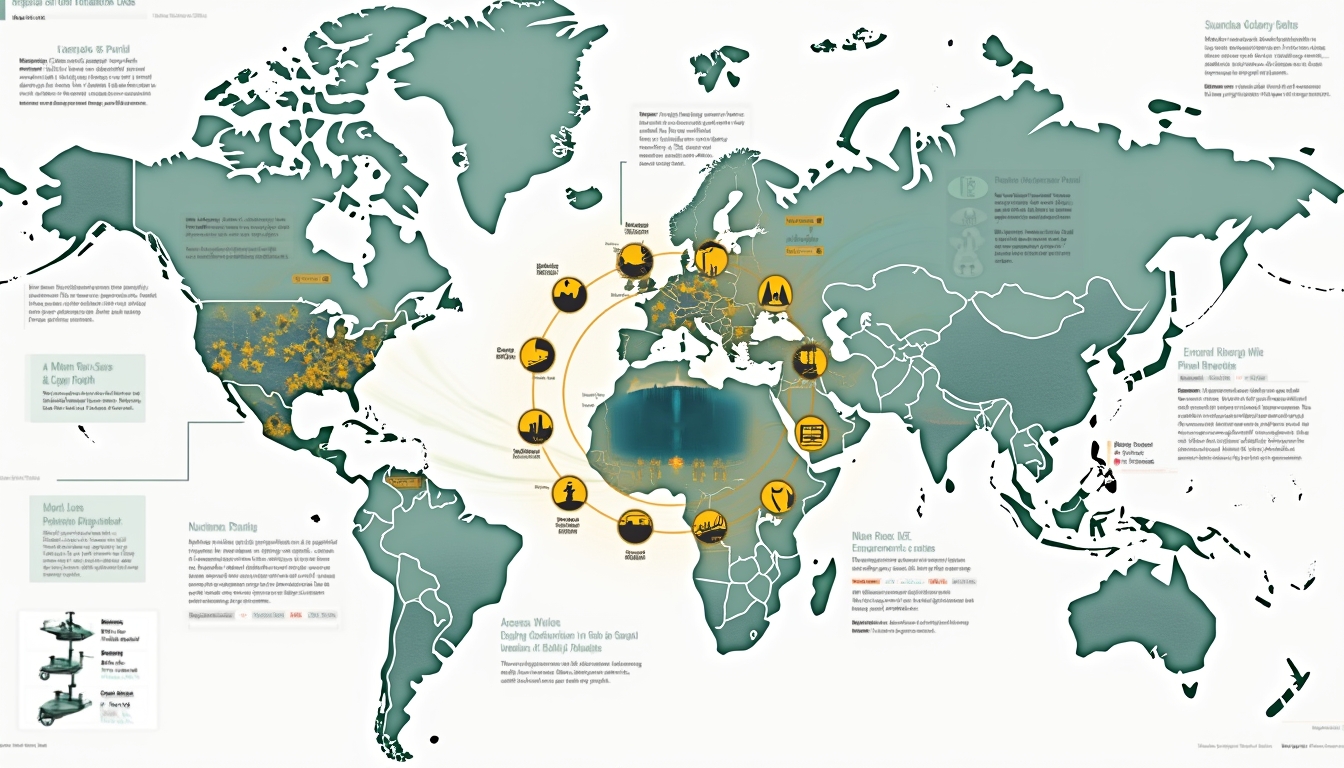Australia maintains a unique position in global trade dynamics, successfully ensuring that Australia avoids US tariffs due to trade surplus. Despite escalating US tariff measures aimed at countries with significant deficits, Australia's favourable trade surplus continues to protect its interests. This resilience is further highlighted by research from Rabobank, which confirms that Australia's balanced economic exchange with the United States effectively shields its exports.
Why Are Tariffs Escalating?
US tariff policy underwent a dramatic shift under the previous administration. The change has redefined global commodity flows and has had a measurable impact on Australia's strategic positioning. As new measures are introduced, various countries are finding themselves exposed to significant tariffs:
- Canada & Mexico: Facing a standard 25% tariff, with selective exemptions on energy products at just 10%.
- China: Confronting an increase in tariffs from 10% to 20%, in a move reflective of broader economic policy changes.
- Other Economies: Countries with growing deficits find themselves at the frontline of this tariff escalation.
For an in-depth look at these developments and their impacts on global commodity markets, consider exploring trump's policies, which offer insight into the broader global context.
What Advantages Keep Australia Secure?
Australia avoids US tariffs due to trade surplus largely because of its strategic economic posture. By sustaining a trade surplus, Australian exports—especially in agriculture and natural resources—remain highly attractive to US consumers and industries. This positive balance of trade not only fortifies the country against punitive tariff measures but also sets a benchmark for other nations grappling with deficits.
Several factors reinforce this advantage:
- A robust mining sector that underpins the nation's export economy. For detailed information on current mining trends and economic challenges, see mining sector trends.
- Shifts in demand for resource-based commodities that align with global economic cycles.
- Long-standing diplomatic relationships that create a mutually beneficial trade environment.
Rabobank research summarises the situation succinctly: "Australia's trade surplus with the US makes it a low-risk target for future tariffs." This dynamic underlines why Australia avoids US tariffs due to trade surplus and accentuates its strategic economic considerations.
How Do US Tariff Policies Impact Global Markets?
Recent tariff waves have brought considerable uncertainty to global trade. The multinational impacts include:
- An increase in the cost of consumer goods due to higher import prices.
- Disruptions throughout complex supply chains, particularly for multinational corporations.
- A reorganisation of global commodity flows, where traditional routes and markets are increasingly volatile.
Tariff Wave Analysis
Rabobank's nine waves of potential tariffs provide a structured framework to understand these changes:
- Colombia: Tariffs on US imports of cut flowers and coffee.
- Mexico & Canada: Aims to impose a 25% tariff on most imports, with reduced rates for certain energy products.
- China: Notably, tariffs increased from 10% to 20% on several categories.
- Ukraine: Focuses on securing rare earth resources critical for modern industries.
- Houthis (Red Sea): Ensures shipping-lane stability, particularly in crucial maritime passages.
- Panama Canal: Reflects possible US strategic ambitions in global shipping.
- Europe (EU): Tariffs could affect machinery, pharmaceuticals, and essential food items.
- US Agency for Development: Likely to see reduced funding, thereby affecting domestic crop production.
- Steel & Aluminium: Increased costs that ripple across downstream industries.
These potential impacts illustrate that while many nations face imminent tariff challenges, Australia's current economic standing places it in a uniquely secure position.
Meeting the Challenges of a Changing Global Economy
While Australia avoids US tariffs due to trade surplus, the global tariff environment remains volatile and unpredictable. This unpredictability means that Australia's policymakers and business leaders must adapt continuously. To manage these challenges, experts suggest several strategies:
- Maintaining and reinforcing strong bilateral relationships with key trading partners.
- Diversifying exports to mitigate risks associated with tariff changes.
- Investing in innovations within key sectors like mining and resource exploration. For instance, china's stimulus in mining has played a significant role in shaping commodity dynamics.
Additionally, businesses are increasingly looking at how cash management strategies can provide both stability and opportunities in times of change. A comprehensive analysis of these approaches can be found in discussions about strategic cash reserves.
The Role of Geopolitical Volatility
The evolving nature of global trade is heavily influenced by geopolitical events and market volatility. Notably, rare earth markets have exhibited remarkable turbulence. Navigating this instability requires taking calculated risks and adapting fast to changing circumstances.
- Adjustments in market demands due to governmental policies.
- Shifts in commodity pricing influenced by strategic imports and exports.
- The integration of policy changes in broader investment strategies.
For those interested in the delicate balances of rare earth elements, insights into rare earth market volatility shed light on the intricate challenges and opportunities facing global trade.
What Do These Developments Mean for Future Trade Relations?
In summary, while tariffs continue to play a central role in shaping global markets, Australia's ability to avoid US tariffs due to trade surplus positions the nation advantageously amidst the chaos. However, vigilance is required to maintain this status in the face of evolving global economic and political landscapes.
Key considerations moving forward include:
- Monitoring tariff implementations across different nations.
- Fostering strong trade partnerships to mitigate risks.
- Balancing domestic economic interests with the demands of international trade negotiations.
Recent discussions by market analysts have emphasised that these shifts could lead to a new era in trade negotiations, where a well-managed surplus, like that enjoyed by Australia, is key to avoiding punitive measures. For a broader perspective on the intense trade discussions, a detailed analysis can be found in trump trade dynamics.
Understanding the complexities of tariff impositions is also crucial. A helpful introduction to the basics of tariffs and surpluses can be found through comprehensive industry news, such as the article on tariff implications.
The Australian Outlook
Australia's assured position—cemented by its consistent trade surplus—remains a critical asset as global geopolitical tensions flare. While many nations face aggressive tariffs, Australia avoids US tariffs due to trade surplus, ensuring steady economic growth and stability. Moreover, its continued investment in sectors like mining and resource management further bolsters this resilient stance.
Looking ahead, the nation must maintain a forward-thinking approach. Strategic planning is essential to safeguard its economic prosperity:
- Review and adjustment of trade policies.
- Embracing innovation in commodity exports.
- Strengthening economic ties with both traditional and emerging markets.
By focusing on these aspects, Australia not only continues to excel in its current economic stance but also lays down a robust framework for sustaining growth amid potential future challenges.
Australia avoids US tariffs due to trade surplus remains more than just a policy statement—it defines a pathway for business confidence and international trust. This advantageous position will likely motivate further strategic investments, ensuring that Australian exports remain competitive on the world stage.
Maintaining this positive trajectory involves close monitoring of international economic policies, comprehensive risk management strategies, and adaptive trade negotiations. As the global market shifts, the importance of a surplus-driven approach becomes increasingly clear, securing Australia's place as a reliable trade partner for years to come.
Ready to Stay Ahead in the Investment Game?
Discover real-time opportunities with Discovery Alert's AI-powered trade notifications, designed to simplify complex market data and help investors—from newcomers to seasoned traders—make informed decisions about ASX mineral discoveries and potential investment opportunities.







